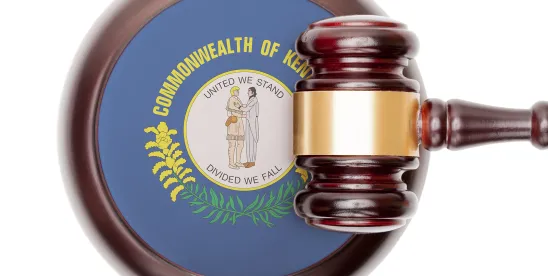Hey, TCPAWorld!
A new case in the Eastern District of Kentucky presents some vicarious liability issues that are worth discussing.
In Hensley v. Dimension Service Corporation, No. 5:24-CV-378-KKC, 2025 WL 1679841 (E.D. Ky. June 13, 2025), the Plaintiff claimed that that he received over 100 calls to his cell phone from unknown numbers, despite this number being listed on the national DNCR. Supposedly, he would either receive a voicemail featuring “odd background noises” or hear an “electronic blip sound” and be transferred to a salesperson if he answered.
In September 2024, Plaintiff allegedly answered one of these calls and purchased a vehicle service contract (the “Contract”) from the salesperson. The Contract identified multiple parties: (1) Pelican Investment Holdings, LLC (“Pelican”) as the seller, (2) Sing for Service, LLC (“SING”) as the payment plan provider, and National Administrative Service Co., LLC (“NAS”) as the administrator and obligor. The Plaintiff then cancelled the Contract and sued, naming these three parties as defendants and Dimension Service Corporation (“Dimension”), likely because it shares an address with NAS. See id. at 6 n.1. Plaintiff brought claims for violations of the TCPA, the Kentucky Consumer Protection Act (“KCPA”), and for invasion of privacy. In response, the Defendants filed a Rule 12(b)(6) motion to dismiss.
TCPA Claims
Direct or Vicarious Liability
Plaintiff alleged that each of the Defendants is liable for violating (1) Section 227(b)(1)(A)(iii) for making calls to his cell phone using a prerecorded message and an ATDS, and (2) Section 227(c)(5) for calling his cell phone number, which was listed on the DNCR.
The Court found that Plaintiff sufficiently pleaded vicarious liability against Pelican but not as to NAS, SING, or Dimension. Specifically, the Court found Plaintiff’s allegation that he was connected to a salesperson and purchased the Contract, by itself, to be sufficient to support “the reasonable inference that Pelican is either directly or vicariously liable for that phone call and other similar phone calls that [Plaintiff] claims he received.” Id. at *2-3 (emphasis added).
As to the other Defendants, however, the Court noted that absent from the complaint was allegations that these entities were directly responsible for the calls or facts demonstrating any semblance of an agency relationship. Though the Contract identified NAS and SING, and the complaint alleged that the “Defendants acted in concert with each other under a common business plan[,]” the Court found this insufficient to give rise to an agency relationship. Indeed, it explained that “simply engaging in business together is insufficient to establish the sort of bedrock agreement present in every agency relationship[.]” Id. at *3 (emphasis added).
And as for Dimension, Plaintiff failed to allege any facts connecting it to the calls at issue. Plaintiff simply pleads that NAS and Dimension are related entities, which is also insufficient to give rise to an agency relationship.
Accordingly, the Court dismissed the TCPA claims as to NAS, SING, and Dimension.
The Substance of the Calls
Next, Section 227(b) requires the calls to be made using an artificial or prerecorded voice or an ATDS, and Section 227(c) requires the calls to be made for telemarketing purposes. And during this analysis, the Court noted that while pleading a prerecorded message is a “low bar,” “courts have required plaintiffs to provide some details describing the prerecorded message.” Id. at *4.
And here, the Court found that Plaintiff provided these details. Indeed, the Court considered Plaintiff’s allegations regarding the identical messages, and odd electronic sounds and pauses before being connected to a salesperson attempting to sell him a vehicle warranty sufficient to establish his 227(b) claim. And though Plaintiff did not explain the contents of each call, the Court found the same allegations sufficient for a 227(c) claim.
KCPA Claims
Plaintiff based his KCPA claims on the very same conduct as the TCPA claims. Because the TCPA claims as to NAS, SING, and Dimension failed, the Court dismissed the KCPA claims against them at the outset.
As to Pelican, however, the KCPA claims were upheld. The Court rejected Pelican’s argument that a cell phone number is not a residential number under the KCPA and cited the definition of a “telephone solicitation” under that statute, which includes mobile phone numbers.
Invasion of Privacy
Finally, Plaintiff charged each of these Defendants with invasion of privacy, which requires (1) an intentional intrusion, (2) into a matter he has a right to keep private, and (3) that the intrusion would be highly offensive to a reasonable person.
This count was ultimately dismissed as to all Defendants. Because this claim was also based on the same facts, the Court quickly discharged NAS, SING, and Dimension from liability. And as to Pelican, the Court found that Plaintiff “fail[ed] to identify a private matter which Pelican intruded on[,]” instead finding the allegations to be conclusory.
Here are some key takeaways:
- The allegation that a plaintiff was connected to a salesperson and purchased a contract that names the defendant as the seller may be sufficient to establish direct and/or vicarious liability on a motion to dismiss; and
- The fact that an entity is somehow related to the defendant, by itself, is likely insufficient to establish vicarious liability.
Until next time!




 />i
/>i

